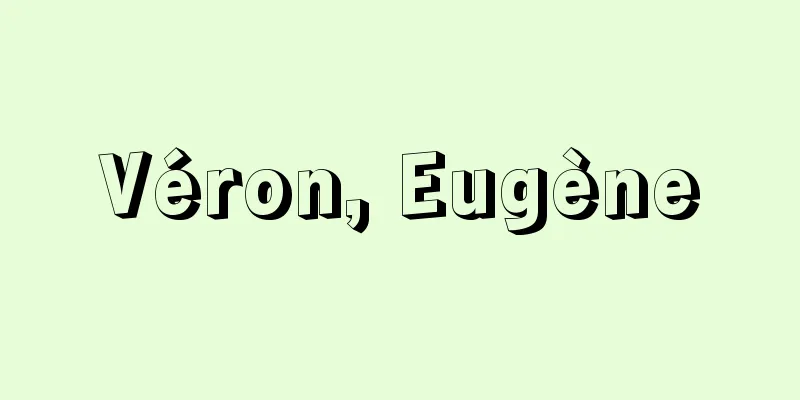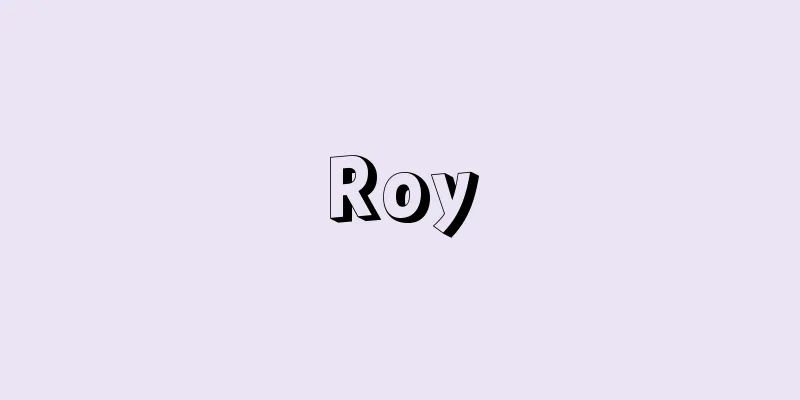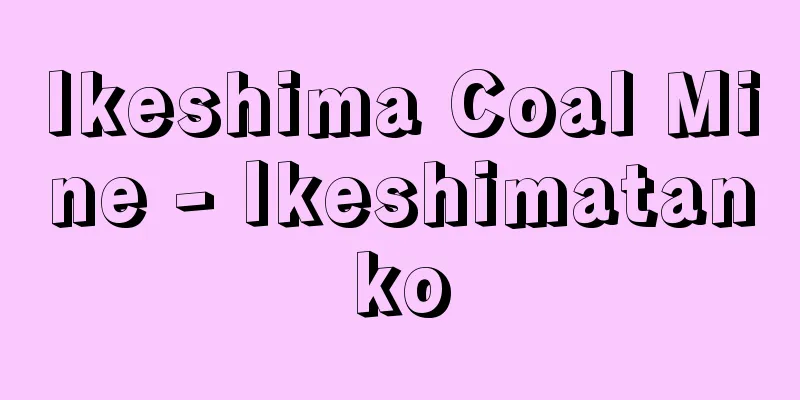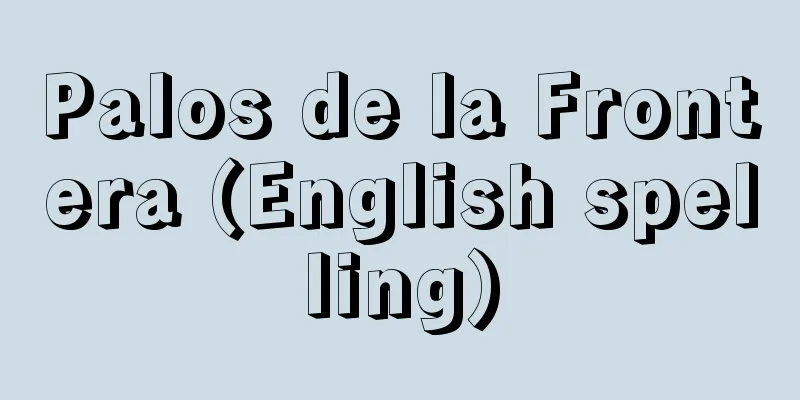Veterinary medicine - juigaku (English spelling)

|
It refers to the science that aims to treat and prevent diseases in animals, mainly captive animals. [Motoyoshi Shigekazu] HistoryVeterinary medicine has ancient origins, but modern veterinary education began with the establishment of a veterinary school in Lyon, France in 1762. In Japan, modern veterinary education began in 1876 (Meiji 9). Initially, the number and variety of animals kept on a serious basis was still small. Later, the improvement of horses needed for the military became important, and the scope of veterinary medicine was expanded to include dairy cows, pigs, and chickens in response to demand. Modern veterinary medicine was introduced as a major subject within agriculture at the Agricultural Training School (later Komaba Agricultural School, now the Faculty of Agriculture of the University of Tokyo) and the Hokkaido Colonization Agency Provisional School (now Hokkaido University), and was taught by foreign teachers at the time. An important goal of veterinary education is to train veterinarians. To this end, in addition to the basics such as veterinary anatomy, animal embryology, veterinary physiology, veterinary pathology, veterinary microbiology, veterinary parasitology, and veterinary pharmacology, specialized courses include clinical veterinary medicine such as veterinary clinical reproductive medicine, veterinary internal medicine, veterinary surgery, veterinary radiology, and veterinary infectious diseases. Furthermore, since knowledge of hygiene is highly necessary in veterinary technology, education in veterinary hygiene and veterinary public health is also provided. [Motoyoshi Shigekazu] The many facets of veterinary medicineIn recent years, veterinary medicine has become widely sought after in fish farming technology, such as in fish pathology. In addition, as concerns grow over the effects of environmental toxicity on living organisms, there is a need to improve environmental pollution by deepening the cooperation between medicine and veterinary medicine, and the development of education regarding the protection of wild birds and animals has become a top priority. This is a global trend, and the scope of veterinary medicine is expanding to meet the demand for comparative animal medicine. Animals used in experiments play an extremely important role in testing the safety and toxicity of various chemical substances, such as pharmaceuticals, veterinary medicines, pesticides, food additives, environmental pollutants, and general chemicals, for humans. Veterinary knowledge and techniques are required for the creation, improvement, breeding, and management of laboratory animals such as mice, rats, rabbits, guinea pigs, dogs, and cats, as well as for experiments. As described above, veterinary medicine today is not only involved in food production and meat hygiene, but also plays a significant role in the development of medicine and pharmacy. In addition to contributing to animal and food hygiene for the safe production of animal-based foods such as milk, meat, and eggs, it also contributes to public health in general through its work of extrapolating the results of animal experiments to humans (applying data obtained from animal experiments to human cases to make predictions) and creating safety standards. Contributions to public health extend not only to animal-based foods, but to all foods, and in these fields collaboration between multiple disciplines such as agriculture, agricultural chemistry, medicine, pharmacy, and engineering is essential. In addition, with the increase in people who keep pets such as dogs, cats, and small birds to enrich the spiritual lives of humans, and horse racing and riding enthusiasts, veterinary medicine is also playing an active role in the medical field, from preventing to treating illnesses in these animals. Furthermore, the scope of work for veterinary students has expanded to include raising and managing various animals in zoos, which entertain many people, and treating their illnesses. [Motoyoshi Shigekazu] Transition of veterinary education and related lawsAfter the Second World War, veterinary education was provided at four-year universities, but the need to respond to the wide range of demands mentioned above led to a major turning point in veterinary education. In May 1977, the Veterinary Medical Act was partially revised, making veterinary education six years in total, consisting of four years of undergraduate studies and two years of master's studies, and those who completed this six-year course were eligible to take the national veterinary medical examination. Then, in May 1983, Article 55 (now Article 87) of the School Education Act was revised, and for students entering in 1984, the system was changed to a six-year undergraduate program without a master's degree, following medicine and dentistry. Furthermore, in 1997, the University Accreditation Association revised the "Standards for Veterinary Education" in light of the need to respond to the international community. Detailed standards were established for each of the following: (1) the philosophy of veterinary medicine and the objectives of veterinary education, (2) organization of education and research, (3) student admissions selection and capacity management, (4) curriculum, and (5) faculty organization and faculty responsibilities and qualifications. In order to respond to these standards, specific measures were discussed at various academic conferences and at councils of both public and private universities in each country. In 2003, the Food Safety Basic Law (Law No. 48 of 2003) was enacted, and the Food Safety Commission was established within the Cabinet. In addition to planning, risk communication, and emergency response, the Commission has 14 expert committees for each hazard factor, such as pesticides, additives, veterinary medicines, chemicals and pollutants, microorganisms and viruses, prions, mycotoxins and natural toxins, etc. Veterinarians who are independent from risk management organizations participate in this committee, and a method of scientifically evaluating risks and setting safety standards has been established. In addition, veterinary knowledge is indispensable when extrapolating animal experiment data to humans, and the importance of veterinary medicine is recognized not only in the field of microbiology, which has a proven track record in the field of public health, but also in the field of toxicity of chemicals. [Motoyoshi Shigekazu] [References] | | | | | | | |Source: Shogakukan Encyclopedia Nipponica About Encyclopedia Nipponica Information | Legend |
|
動物、おもに飼育動物の疾病の治療および予防を目的とした学問をいう。 [本好茂一] 沿革獣医学の起源は古いが、1762年にフランスのリヨンに獣医学校が設立されたのが近代獣医学教育の始まりである。日本では、1876年(明治9)に近代獣医学の教育が行われるようになった。当初、本格的に飼育されていた動物は種類の面からも数のうえからもまだ少なかった。その後、軍隊に必要なウマに対する改良が重要となり、乳牛、ブタ、ニワトリと、需要に応じて獣医学の対象は広げられてきた。近代獣医学は、農事修学場(後の駒場農学校、現東京大学農学部)、開拓使仮学校(現北海道大学)などで、農学のなかの主要教科として始められ、当時は外国人教師によって指導されていた。 獣医学教育においては、獣医師の養成が重要な目的である。この目的に沿うため、獣医解剖学、動物発生学、獣医生理学、獣医病理学、獣医微生物学、獣医寄生虫病学、獣医薬理学などの基本のほか、専門課程には、獣医臨床繁殖学、獣医内科学、獣医外科学、獣医放射線学、獣医伝染病学などの臨床獣医学がある。さらに、獣医技術には衛生面に関する知識の必要性も強く、獣医衛生学、獣医公衆衛生学などの教育も行われる。 [本好茂一] 獣医学の多面性近年、獣医学の専門領域は、魚病学などとして魚類の養殖技術のなかにも広く求められるようになった。また環境毒性による生体への影響が叫ばれるなかで、医学と獣医学の連係を深めたうえでの環境汚染に対しての改善が求められ、野生鳥獣の保護についても教育の整備が最重要課題となっている。これは世界的傾向で、比較動物医学としての需要にもこたえるべく獣医学の対象も広げられている。 そして、医薬品、動物薬、農薬、食品添加物、環境汚染物質、一般化学物質などさまざまな化学物質の、人間に対する安全性・毒性などの検定には、実験用動物がきわめて重要な位置を占めている。マウス、ラット、ウサギ、モルモット、イヌ、ネコなどの実験動物の作出、改良、増殖、管理をはじめ、実験にも、獣医学的学識と技術が求められる。 以上のように、現在の獣医学は、食料の生産、食肉衛生などに携わるだけでなく、医学、薬学の発達にも少なからず役だっている。安全な乳肉鶏卵など動物性食品生産のための動物衛生、食品衛生への寄与に加え、動物実験の成績を人間に外挿(がいそう)(動物実験によって得られたデータを人間の場合に当てはめ予想値を出すこと)し安全基準をつくる仕事を通じて広く公衆衛生にも貢献している。公衆衛生への貢献は動物性食品のみならず、すべての食品に及んでおり、これらの領域では、農学、農芸化学、医学、薬学、工学など多分野の共同作業が不可欠になっている。 また、人間の精神生活に潤いを与えるイヌ、ネコ、小鳥などペットの飼育家や、競馬・乗馬愛好家が増加したため、それら動物の疾病の予防から治療に及ぶ医療面でも獣医学は活躍している。さらに、獣医学徒の職域は、多くの人々を楽しませる動物園の種々の動物の飼育管理から病気の治療にまで広がっている。 [本好茂一] 獣医学教育の変遷と関連法第二次世界大戦後、獣医学教育は4年制大学で行われてきたが、前述のような広範な要求に対応する必要から、獣医学教育は大きな転換期を迎えた。1977年(昭和52)5月、獣医師法が一部改正され、獣医学教育は学部4年と修士2年の計6年となり、この6年の課程修了者が獣医師国家試験の受験資格をもつこととなった。その後1983年5月の学校教育法第55条(現在は87条)の改正により、1984年度入学の学生から医学、歯学に次いで、大学院修士の過程を利用しない学部一貫6年制に変更された。さらに1997年(平成9)、大学基準協会により「獣医学教育に関する基準」が、国際社会への対応の必要性を踏まえ、改定された。(1)獣医学の理念と獣医学教育の目的、(2)教育研究の組織、(3)学生の入学者選抜・定員管理、(4)教育課程、(5)教員組織と教員の責務・資格についてなど、それぞれ詳細な基準が決められ、これに対応するため、種々の学術会議や各国公立大と私立大、それぞれの協議会で具体策が検討された。 2003年には食品安全基本法(平成15年法律第48号)が制定され、食品安全委員会が内閣のなかに設置された。同委員会には、企画、リスクコミュニケーション、緊急時対応に加え、農薬、添加物、動物用医薬品、化学物質・汚染物質、微生物・ウイルス、プリオン、カビ毒・自然毒等など、危害因子ごとに14の専門調査会がおかれている。ここではリスク管理機関から独立した立場の獣医師が加わり、科学的にリスク評価を行い安全基準を定める方式が定着している。また、動物実験データの人間への外挿の際には、獣医学の学識が不可欠であり、公衆衛生分野で実績のあった微生物分野に加え、化学物質の毒性分野においても、獣医学の重要性が認識されている。 [本好茂一] [参照項目] | | | | | | | |出典 小学館 日本大百科全書(ニッポニカ)日本大百科全書(ニッポニカ)について 情報 | 凡例 |
Recommend
Quarantotti Gambini, PA (English name)
…On the other hand, those who survived World War ...
Latimeria chalumnae (English spelling)
…[Ueno Teruya] [Hibiya Kyo]. … *Some of the termi...
Ars Electronica Center
...While computers have recently penetrated deepl...
Ukigaya - Ukigaya
...The paddy field weed G. acutiflora Torr.ssp. j...
chain cutter
… [Development History] The world's first suc...
moiety
…a social organization or state in which a societ...
Kananbare - Kananbare
...The dolls used in the Hinamatsuri festival are...
Obrenović (English spelling) Miloš Obrenović
1780‐1860 Founder of the modern Serbian dynasty of...
Oxadiazon - Oxadiazon
...Simazine and atrazine in particular are known ...
Planning Board Incident
In January 1941 (Showa 16), Planning Board invest...
Talohos
…The oldest carvings, of elephants and hippos, ar...
Lange-Eichbaum, W.
…The concept of a “child prodigy” has also been p...
Amphithoe lacertosa (English name)
... Hyale grandicornis (10-22mm long) looks like ...
logical atomism
…(3) Logicism He placed importance on the newly c...
World Bank - Sekaiginko (English spelling) World Bank
An international organization under the United Nat...









